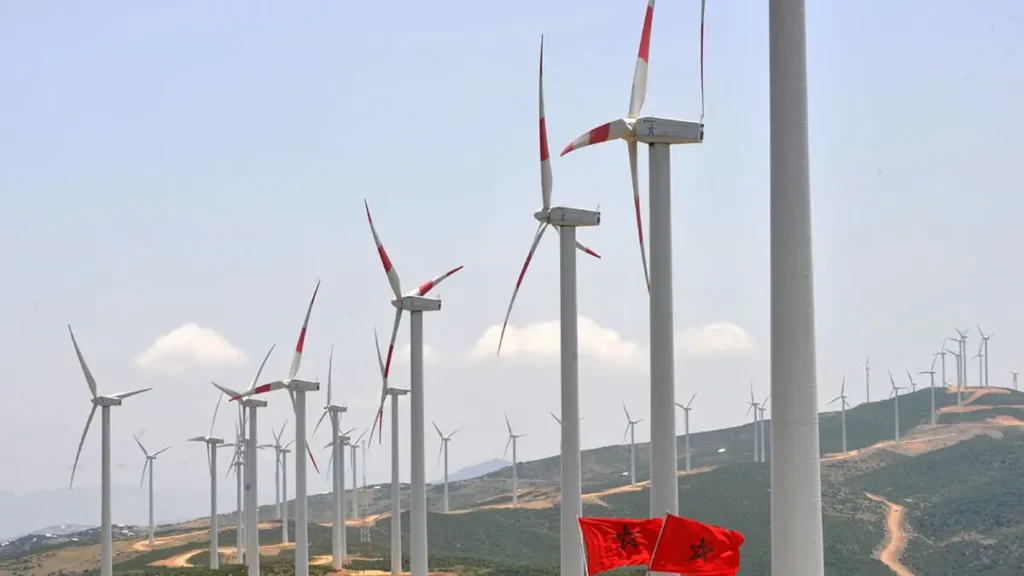
After Growth, New Matter: The Chergui Winds and Morocco’s Renewable Energy Future

In northern Morocco, the chergui winds are ubiquitous. Most prominent in the spring and summer, the chergui carries a warm and dry air that travels thousands of miles from the Sahara Desert. When these winds reach northern Morocco, they also bring collective experiences of fatigue, disorientation, and physical and psychological sickness. These symptoms are widely recognized, yet their cause is largely unknown, lying somewhere between social fact and scientific truth, between folklore and pathology.
These same winds have also created new horizons for Morocco’s renewable energy sector. Since 2000, six sprawling wind farms have been constructed between Tangier and its neighboring city, Tetouan. Wind now provides over 13% of Morocco’s energy—a figure expected to rise to 20% as the country aims to generate 52% of its total power from renewable energy sources by 2030. These projects are part of a broader push to position Morocco as a leader in the so-called green industries. Over the past few decades, Moroccan leaders have made great strides in advancing the nation’s sustainable development while also seeking to revitalize rural economies struggling with the effects of urban and transnational migration. In northern Morocco, one of the nation’s windiest regions and the site of vast economic disparities, these initiatives hold particular socioeconomic importance.

This paper asks: What modes of being, thinking, and becoming arrive and depart with the wind? The rapid development of Morocco’s green industries presents new ways to conceptualize wind, transforming it from a tangible bodily experience to the source of renewable energy. But do the corporeal dimensions of Morocco’s winds stand in opposition to the geopolitical imperatives that drive the nation’s investment in the green industries? This paper looks to the wind, in all its social and cultural entanglements, as a way out from the productivist logics which underpin Morocco’s renewable energy projects. How might calling attention to the physical experiences of the chergui facilitate a shift away from the wind as an extractable resource and toward a renewable energy industry beyond prevailing forms of economic growth?
Follow this link to read the full text: https://drive.google.com/file/d/1jk9oiCov3hOKMgTLYbodfBXk35AxfSDG/view?usp=sharing